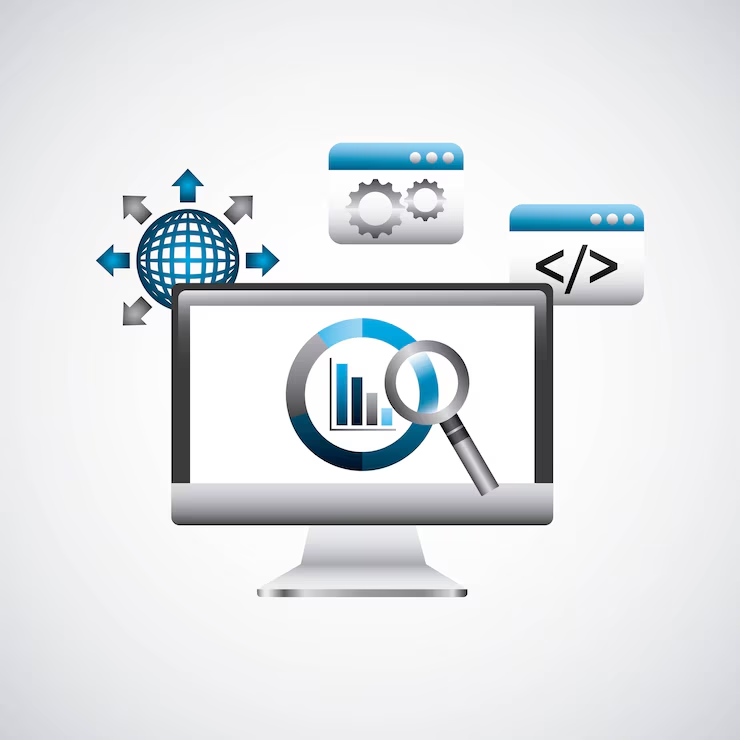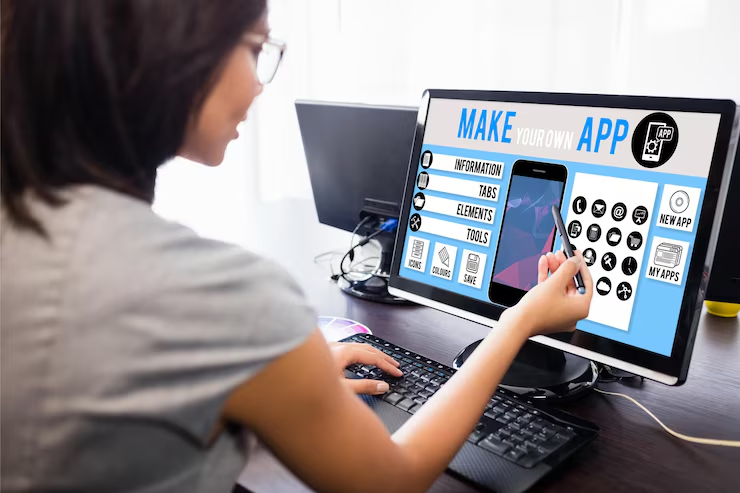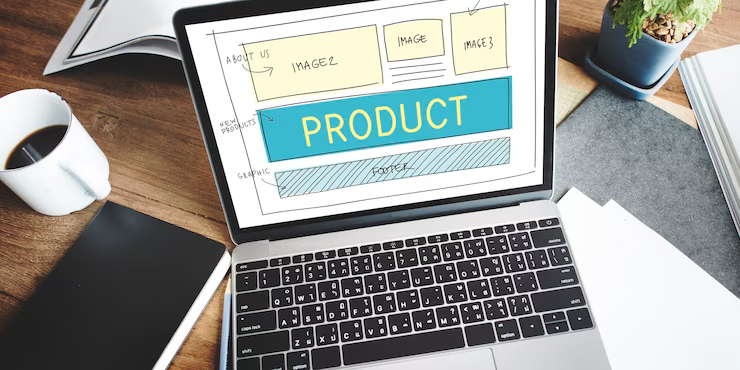 Through the vast amount of online services and digital initiatives within an organization, web portals have developed into all-encompassing instruments of tailored solutions for both internal users (employees, administrators) and external stakeholders (customers, partners, vendors). This guide goes in-depth into web portal development, its types, advantages, fundamental features, technologies, development stages, industry use cases, costs, and the future outlook.
Through the vast amount of online services and digital initiatives within an organization, web portals have developed into all-encompassing instruments of tailored solutions for both internal users (employees, administrators) and external stakeholders (customers, partners, vendors). This guide goes in-depth into web portal development, its types, advantages, fundamental features, technologies, development stages, industry use cases, costs, and the future outlook.
What is Web Portal Development?
Definition of a Web Portal
A web portal is an actively interactive website that brings together other services, tools, and content in a unified interface. Such portals differ from websites in that rather than static sites with defined locations, they are dynamic and personalized according to user role, interests, and log-ins. Some of the features of web portally includeruser dashboards, analytics, document sharing, chat support, and linkages to third-party applications.
Types of Web Portals
Portals are thus varied and suit different functions of businesses. Common types of web portals include as follows: Customer Portals:- Customer Portals: These are portals businesses use to enable customers with fulfillment, order tracking, support ticketing, FAQs, and means to be in contact with them.
- Employee Portals: The internal portals from which the employees would be able to move their self-services, payroll access, HR documentation, collaborative tools, and productivity tracking.
- eLearning Portals: These comprise educational sites with a range of online courses, certifications, quizzes, video lectures, and performance analytics open.
- B2B/B2C eCommerce Portals: Portals through which transactions, browsers, vendor management, and customer relationship management are done online.
- Healthcare Portals: Allow patients to connect with their health data; schedule appointments; offer teleconsultations; and communicate with health providers.
- Government Portals: Portals for e-governance, these are places where citizens can access services, pay taxes, and fill out official forms electronically.
- Real Estate Portals: For property listings, virtual tours, agent communication, and handling of legal documents.
- Community Portals: Specialized form-designed forums, blogs, and discussion boards dedicated to community engagement.
Importance of Web Portals for Businesses
Web portals are transformational for organizations in terms of efficiency, user experience, and scalable digital infrastructure. Here's why they count:- Centralized Information Access: Bring all of the company's information, resources, and communications into a single platform.
- Better User Experience: Role-based customizing ensures that users can interact with their contents.
- Communicating Services: Ability to connect to third - party software such as CRMs, ERPs, payment gateways, etc.
- More Enhanced Communication Channels: Real-time communication through chats, forums, and support tickets allowed by web portals.
- Scalable and Customizable Solutions: Built to grow with business needs, supporting addition of features and user roles.
- Cost Reduction: Process simplification at the automation of daily manual operations and linked cost-benefits over time.
- More User Involvement: Gamified experiences, loyalty programs, and interface interaction
Key Features of a Successful Web Portal
Successful web portals should comprise both user-centric features and powerful backend functionalities:- User Registration & Authentication: Secured access via registration email, OTP verification, login credentials.
- Advanced Search Functionality: Use smart filters and AI suggestions to find relevant content or services.
- Personalized Dashboards: Contents, notifications and tools by user role preferences. Role Based Access Control: Differentiates access content visibility for admins, customers and staff.
- Content Management System (CMS): This should easily enable creation, edit and publishing of web content.
- Chatbots and Live Support: Human presence for automated resolver of queries.
- Mobile Responsiveness: Ensures equal experience on smartphones and tablets.
- Security and Data Protection: SSL, encryption, two-factor authentication, and GDPR compliance.
- Third-Party API Integration: Connects directly to outside party API-such as payment gateway, CRM system, or logistics provider.
- Analytics and Reporting: Real-time dashboards provide insights that enable effective decision-making.
Technologies Used in Web Portal Development
 The right technology stack is what matters most for performance, scale, and user experience purposes. Here are the primary technologies involved:
The right technology stack is what matters most for performance, scale, and user experience purposes. Here are the primary technologies involved:
Frontend Technologies
- HTML5 & CSS3: Course structure and styling for all kinds of purposes.
- .JavaScript: For interactivity enhancement.
- React.js: Exceptionally reusable components and high-performing interfaces.
- Angular: Full-featured frontend framework.
- Vue.js: Lightweight and flexible for interactive UIs.
Backend Technologies
- PHP: Most suitable for CMS and eCommerce platforms.
- Node.js: Event-driven architecture, perfect for real-time applications.
- Python: Mostly in AI-based portals and in data-intense platforms used.
- Java: Robust and secure, commonly used for enterprise-grade portals.
- ASP.NET: Best for portals requiring Microsoft technology stack
Database Management
- MySQL: Relational database for structured data among other features.
- PostgreSQL: An advanced database with support for complex querie
- MongoDB: NoSQL database suited for large volumes of unstructured data.
- Firebase: Real-time cloud-hosted NoSQL database.
APIs and Web Services
- REST APIs: Common in fetching and posting data to third-party apps.
- SOAP: Old, still used in legacy systems and government portals.
Hosting and Cloud Services
- AWS: Great flexibility with an extensive array of cloud tools.
- Google Cloud Platform: Fit for data-oriented applications.
- Microsoft Azure: Ideal integration with .NET and enterprise toolsets
Step-by-Step Process of Web Portal Development
 The well-planned formation of an organized strategy to convert a dream into a successful and scalable web portal is the initial part, and such building needs to be undertaken step by step with full vision on the objectives of the business and the expectations of the end-users. Here underlies a comprehensive breakdown of the required phases in the development course of a web portal towards successful launching of the digital product.
The well-planned formation of an organized strategy to convert a dream into a successful and scalable web portal is the initial part, and such building needs to be undertaken step by step with full vision on the objectives of the business and the expectations of the end-users. Here underlies a comprehensive breakdown of the required phases in the development course of a web portal towards successful launching of the digital product.
1. Requirement Gathering & Research
The first step that involves requirements in the development of any web portal is realizing the uniqueness of it for clients and users. It would involve intense discussions among all the stakeholders to finalize project objectives with respect to the personas of different target users, business workflows, and expected outcomes. This is done through a thorough competitive analysis, analyzing features, trends, and technology gaps in the market. Such an analysis rarely serves to provide important insights based on the study that had fortified the entire development mechanism with preventive actions against time slippages.2. Wireframing & UI/UX Designing
Once it is clear what the requirements are, the requirement team designs layouts-first wireframes creating elemental blueprints as to layout, navigation flow, and content blocks for the portal. These wireframes are then converted into high-fidelity UI/UX mockups representing the brand identity, UX principles, and responsive behavior. This has to be complied with in such a way that as far as navigation, visual hierarchy, and consistency across devices is concerned frictionless user experience is guaranteed. Before development, interactive prototypes could also be built to test and validate user interactions.3. Portal Architecture Planning
During this step, technical teams create the structure of a web portal. They set out the technology stack (front-end frameworks, back-end languages, and database systems), server architecture, data models, API protocols, and security layers. More importantly, scalability, modularity, and data safety will be given emphasis. Well architecture planning means that the portal can be increased with a possible growing desire from users who use it, yet remains stable under heavy traffic or loads of data.4. Frontend & Backend Development
The dimension given is thus set forth by architecture, and the portal can thus now be built. The portal uproots the frontend development team turning UI designs into an actual interface meant for users through HTML, CSS, JavaScript, etc. beside state-of-the-art frameworks including React, Vue.js, or Angular. At the same time, the backend development team implements the operations and APIs with the server-side logic, database, and user authentication through the various stacks such as Node.js, Laravel, Python (Django/Flask), and ASP.NET. Attention is paid to writing clear, modular, and maintainable code and adherence to other best practices in software development.5. Third-Party Integrations
The practice of third-party API integration is common among developers. Some of these services include payment services (PayPal, Stripe, Razorpay), mapping services (such as Google Maps or Mapbox), CRM systems, ERP systems, live chat services, and analytic tools (Google Analytics, Hotjar). In short, all these tools should run in harmonious synchronization within the framework of the portal, making it valuable to both users and admins.6. Testing & QA
This portal would be subjected to a deep function, performance, and security requirement testing process prior to deployment. QA engineers would do unit testing, integration testing, functional testing, usability testing UI/UX, load testing, and security audits. Some tests have also been automated, apart from that, to lessen that workload and catching bugs early, which will go to a stable error-free product performing well under varying conditions and user interactions.7. Deployment
The portal typically is then ready to launch after having undergone rigorous testing and received stakeholder approvals. This is usually done through a CI/CD pipeline to facilitate update and minimize downtime. The web portal initially launches in staging for final reviews and then moves to production. In most hosting platforms, they are those that usually provide high availability and scalability, mostly AWS, Microsoft Azure, or Google Cloud.8. Ongoing Maintenance & Support
Custom Web Portal vs. CMS-Based Portals
Custom Web Portal
- Pros: Appropriately tailored concerning business needs, very scalable, good security.
- Cons: More expensive, more time-consuming.
CMS-Based Portals
- Pros: Cost-effective and rapid development, good community backup.
- Cons: Limited customization possibilities, security issues with Plugins.
Popular CMS Platforms
- WordPress: Ideal for content-heavy portals.
- Drupal: Enterprise-ready: advanced access control.
- Joomla: Flexible yet user-friendly.
- Magento: Exclusively for eCommerce.
Web Portal Development Cost Estimation
Factors That Influence Cost
- Number of features and pages
- Type of portal (B2B vs. B2C vs. Internal) Custom vs.
- template-based
- Complexity of UI/UX
- Developer skills and regional location
Cost Breakdown by Region
- India: $3,000 - $15,000
- South-East Asia: $5,000 - $18,000
- European/USA: $10,000 - $50,000
How to Optimize Costs
- Open-source solutions
- Phased development.
- Offshore development.
- Reuse already developed modules.
🏆 Top 5 Web Portal Development Companies in India (2025)
| Rank | Company Name | Location | Core Services | Key Highlights |
|---|---|---|---|---|
| 1️⃣ | Infimintus Technologis | Indore, Madhya Pradesh | - Custom web portal development- UI/UX design- Full-stack technologies (PHP, Laravel, React, Angular)- API & CMS integration | - 360° digital solutions- AI-integrated workflows- High client retention |
| 2️⃣ | Konstant Infosolutions | Jaipur, Rajasthan | - Custom web apps- E-commerce portals- CMS development | - Global clientele- High-quality coding practices |
| 3️⃣ | Capital Numbers | Kolkata, West Bengal | - Web portals & enterprise systems- UI/UX design- API integrations | - Scalable web solutions- Skilled teams across technologies |
| 4️⃣ | WPWeb Infotech | Ahmedabad, Gujarat | - WordPress & WooCommerce portals- Custom plugins- Performance optimization | - Strong in CMS & plugin customization- Focus on speed and UI |
| 5️⃣ | Unified Infotech | Kolkata, West Bengal | - Enterprise web portals- Mobile & software integration- UI/UX design | - Award-winning design- End-to-end development partner |
Choosing the Right Web Portal Development Company
Evaluation Checklist
- Portfolio: Look for relevant past projects and industry experience.
- Technical Skills: Measure their skills in relevant technologies.
- Client Reviews: Look for online ratings and testimonials.
- Communication: Ensure common agreement on scope, timelines, and support.
Benefits of Hiring from Indore
- Cost advantages.
- Well-skilled developers.
- Efficient IT Infrastructure.
- Government support for Startups and digital business.
Use Cases & Industry Applications
- Education: Learning Management Systems (LMS) with dashboards for the student-teacher combo.
- Real Estate: Portals responsible for 3D tours, lead management, and online bookings.
- Healthcare: Patient portals with access to EMR appointment booking and tele-health.
- Retail & eCommerce: Custom catalog, cart, payment, and shipment tracking.
- Finance: For investment and loan management for secure banking portals.
- Travel: Booking engines, itinerary planners, and user reviews.
Common Challenges in Web Portal Development
- Security Risks: Minimize using encryption, firewalls, and secure coding practices.
- Cross-Platform Compatibility: Requires lots of testing.
- User Onboarding: Train users or use tooltips to ease user transitions.
- Content Scalability: Consider using a modular CMS or a scalable backend.
- Maintenance Complexity: Dedicated support teams are a must.
Future Trends in Web Portal Development
- Experiences Driven by AI: With personalization in recommendations, searching, and automating activities.
- Voice Search Integration: Enhancing accessibility and user convenience.
- Security by Blockchain: For transactions logs and secure digital identities.
- AR/VR: For immersive product demonstrations or property tours.
- Progressive Web Apps (PWAs): Fast, installable, and work offline.
- Green Web Hosting: Adoption of eco-friendly infrastructure.
Conclusion
Web portals are considered among the building blocks of an organization's digital strategy across industries. Web portals create operational efficiencies and bring users together through seamless engagement; they are but catalysts for change, growth, and innovation. As technology transforms itself, intelligent, scalable, and secure portals will be building blocks for creating new digital experiences to measure their success. Choosing a right development company from tech towns like Indore will only complement your portal creation journey.Frequently Asked Questions
Q1: What makes a web portal different from a website?
A web portal is conceived as an interactive platform that provides personalized access to its users and typically uses log-in credentials to make available such content, tools, and services geared towards a specific role or preference of the user.
Typically a website publishes static information for general consumption; a portal is a gateway to multiple resources, which integrate various applications and data sources into a secure, user-friendly environment. In this regard, a portal is suited for organizations that must give their clients, employees, or partners a single place to access information, carry out tasks, or communicate online.
Q2: How much does web portal development cost in India?
Costing for development of web portals in India lies generally between $3,000 and $15,000, though on the higher or lower side depending on certain factor. Features' involved complexity, number of user roles, integration with third-party systems, level of security, and choice of technology platforms are some of the factors. Cost-effective basic portals with their standard usable functionalities would fall on the lower side of the scale, while custom-built enterprise portals with advanced and comprehensive features like real-time analytics, multi-language support, and scalable infrastructure surely will be the expensive ones.
Q3: What features should a business web portal include?
There are some key features that a business web portal should provide to ensure easy use, secure operation, and functional capability. Typically, they include secure login and password verification methods for the protection of user data, role-based access control to personalize content and permissions, and custom dashboards for viewing information at one go. A very strong content management system (CMS) should be used to ease the burden of updating and publishing content while third-party API integrations should allow easy linking to other software such as CRM, ERP, or payment gateways. In addition, analytics must monitor user behavior and system performance, and responsive design should allow everything to work on any device, from desktop to mobile.
Q4: Why hire a web portal development company in Indore?
Indore is quickly becoming a major IT hub, with the unique proposition of affordable development services backed by skilled software engineers. The companies in Indore capture the differential pricing advantages concerning costly metro cities in the same context and also provide the perfect quality and technical expertise. Along with all this, the innovation-friendly local ecosystem is itself a huge reason for timely deliveries and hence makes it a very strong contender for companies looking to develop a custom web portal. The second advantage of engaging an Indore company is establishing great communication, quick assistance, and collaboration, given a good time zone fit and cultural concordance.
Q5: How long does it take to build a web portal?













